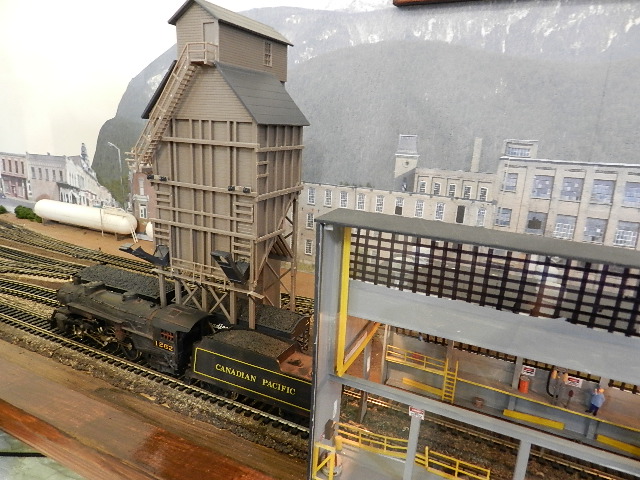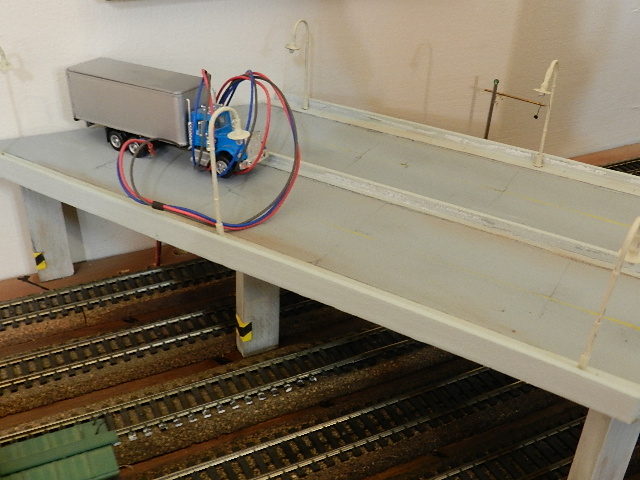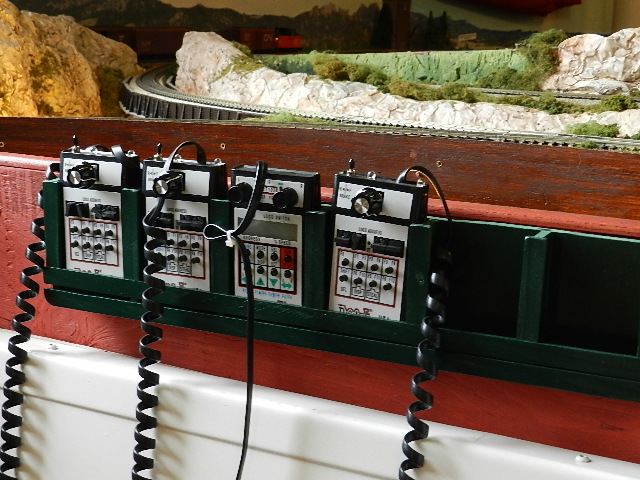….and it’s been all to short for me. I know I should’a spent a lot more early mornings out on the lake but there always seemed to be tomorrow. Still, as a group, we accomplished a few things down on the CORC during the rare cloudy days.
Probably most obvious are the beginnings of the Nelson rebuild. Much of the work will be done during our annual shut-down in January but John Green has shifted a few feet of track and turnouts around and made room for the coaling tower donated by Arnold Stoffer. That will be a great scenic addition and the last thing you see as you head out on the fire escape should the need arise.
Also new, and still not installed, is the highway overpass in Nelson. Your right. There isn’t a 4 lane bridge over the freight yard but I needed a ‘shady place’ to install a pair of new infrared emitters and detectors. More on that later but even without that reason it adds significantly to the look of the yard. It is well lit with street lights and the truck will add more colour. There is a good DC buss under the bridge so John can add all the effects he likes and it unplugs easily so a person can take it to a work bench.
I’ll be blending the whole structure into a full scenic backdrop from ScenicKing in the next few weeks.
Over at the dispatchers office I found a location for the CORC and personal throttles. They had been piling up in a filing cabinet drawer. Not good technically or professionally. All of these will soon be returned for upgrading because we want full radio control by Christmas. It would be nice to remove the plug-ins but I’m pretty sure guests will find a use for them.
You’ll notice we’ve replaced the BIG knobs on all the small throttles. Now the grownups can get their thumbs around the address switches.
They’re Baaaaack!
Yes, those dastardly Yardmasters are reborn. Following 5 months of failure at the start of this year the group and I decided to toss it in and simplify the visitors “Go and Stop” function at the museum. With a series of timer relays we were able to apply DC to the station areas and reapply DCC on demand. Engines would slow down and stop on the DC and speed up and return to the main line on DCC. It worked well but….
The wheels of the engines (three or more of them running at once) would pass over the DC/DCC track junction and momentarily corrupt the DCC on the whole layout causing the decoders in engines that were still running to stop and jump ahead. Not unworkable but when an engine had stopped in it’s desired location it would often receive a false message to get up and go. Not a good thing.
So here we are again……
The three once derelict Yardmasters were farmed out to John Kerby in Coldstream and he devised a schematic (different from that suggested by the maker) that seemed to work on his bench.
New, high end infrared, better 12 VDC power and much more judicious use of shielded cables in an ugly EMI environment and I have (1) very positive sensor response and (2) a stable trigger output at the Yardmasters.
Over the next week or two we will run trains using the DC/DCC system while I observe the interaction of the track sensors and the Yardmaster output messages to see if they really do follow each other. Should that be the situation I will hook up the Yardmasters to the stopping tracks and let the chips fall where they may.
Failing that, the members approved a plan to double track the whole outside loop. That would offer us 3 tracks for 3 trains. Press GO – trains run for 3 or 4 minutes – trains stop.
Anyway, be sure to drop by the museum in Peachland BC and pay us a visit. Anytime for a look-see. Wednesday evening and Saturday afternoon if you want a throttle.




